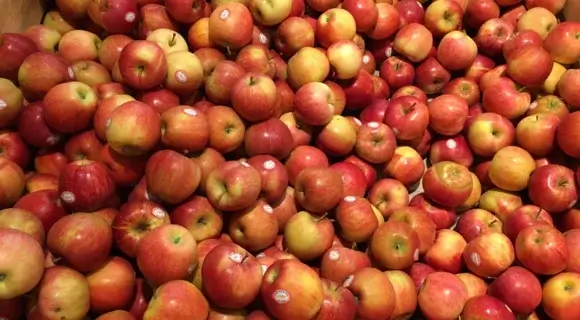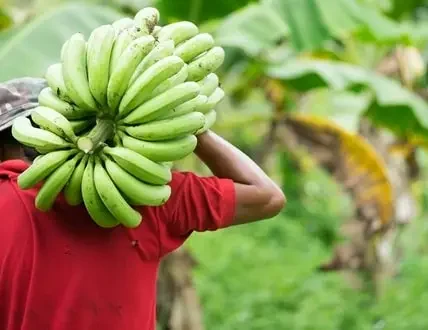In the world of agriculture, apples stand for health and refreshment and are loved by people all over. The popularity of apple is primarily because it contains antioxidants and fiber which basically are two very important elements found in apples. Apples are among the most popular fruits all over the world, and have a variety of potential health benefits that range from the heart health to controlling blood sugar. It has now been clear, as we have been traveling through the vast landscapes of apple orchards, that some countries are the fundamental axis of the apple worldwide system. Below, we will focus on top 10 largest apple producers in the world and look at characteristics that make these nations distinctive in apple production.
Countries With Highest Apple Production
1. China (44,500 MT):
China produces 44,500 metric tons of apples, the most. The vast orchards in Shaanxi, Shandong, and Henan help China dominate the apple market. Innovative farming methods fuel the nation’s dominance. China leads apple production due to its technical and climatic balance. They are strategically using modern farming methods increases production and fruit quality. This synergy helps China fulfill local demand and provide the world’s apples. China produces the most apples and sets agricultural standards. China dominates apple production due to its large orchards and innovation.
2. Turkey (4,968 MT):
Turkey is proud to be the second-largest apple producer, generating 4,968 metric tons yearly. The nation produces a lot of apples because to its diverse geography and ideal orchard temperature. From coastal plains to highlands, Turkey’s environments support apple growing. Local conditions affect apples cultivated in this diversified area. Turkey is good for apple growing due to moderate temperatures and widespread rainfall. Quantity, sweetness, and healthiness distinguish Turkish apples. Turkish apples are a family favorite for their taste, crispness, and health benefits. Apples from Turkey are popular globally.
3. United States (4,300 MT):
The US produces 4,300 metric tons of apples annually, ranking third globally. Washington, New York, and Michigan orchards increase apple production. Due to its diverse weather and geography, the US produces several apple varieties. Customers may get apples for different flavors year-round with this variety. Orchards in the U.S. include sweet Honeycrisp and tart Granny Smith. The US apple market is distinguished by modern agriculture and technology. Modern agricultural technology boosts yield, efficiency, and quality for American apple farmers. Technology integration maintains the U.S. leading apple crop innovation. Technology and sustainable farming boost the nation’s global standing and tackle environmental problems. The US apple industry becomes an example of efficiency and sustainability as agriculture advances.
4. Poland (4,067 MT):
Poland produces 4,067 metric tons of apples yearly, fourth worldwide. The nation’s dedication to sustainable agriculture and Pomerania and Lubusz’s good climate help apple businesses succeed. Poles’ sustainable farming methods show environmental responsibility and long-term agricultural vision. Polish apple producers use eco-friendly methods to protect their orchards and promote sustainable agriculture. Polish apples are boosted by favorable weather in key areas. Pomerania and Lubusz orchards have ideal temperatures, precipitation, and soil for apple trees. This climate-agriculture balance has made Poland a global apple powerhouse. Polish apples, noted for quality, are popular overseas. Polish apples are known for their flavor and quality globally. Poland’s apples are emerging in global shops, solidifying its position as a reliable apple dealer.
5. India (2,400 MT):
India, famed for its agriculture, produces 2,400 metric tons of apples, sixth worldwide. Jammu & Kashmir, Himachal Pradesh, and Uttarakhand provide most of India’s superb apple production, each adding flavor to its diverse agriculture. The Himalayas and heights provide apple-friendly microclimates in several states. To tackle climate change, Indian farmers combine old and modern farming practices. The synergistic technique protects apple cultivation and improves harvest output and quality. Jammu and Kashmir, the “Paradise on Earth,” enhances apple output in India. Apples thrive in the valley’s moderate climate and rich soil. Himachal Pradesh has a lengthy apple harvesting season due to its different elevations, meeting local and worldwide demand.
6. Iran (2,241 MT):
Iran produces 2,241 metric tons of apples yearly, sixth worldwide. The country’s agricultural landscape is as varied as its culture, from lush Caspian Sea beaches to bleak middle sections. Iran has a diversified apple industry due to its geographical diversity. The Caspian Sea region grows unique-tasting apples due to its mild temperatures and ample precipitation. The region’s rich soil and appropriate climate give these apples a unique taste. Iranian agriculture must survive in arid central regions with many challenges and opportunities.
7. Russia (1,742 MT):
Russia produces 1,742 metric tons of apples yearly, sixth globally. Russia’s apple industry depends on enormous Krasnodar and Stavropol orchards, showcasing its agricultural might. Krasnodar Krai in the southwest and Stavropol Krai in the northern Caucasus produce Russia’s best apples. These areas’ rich soils and climate support apple growth. These places’ precision farming methods demonstrate agricultural brilliance. Russia’s apple supply depends on weather adaptability. The vast country has climates from pleasant Europe to severe Siberia. This endurance enables Russia’s apple industry produce apples year after year despite weather changes.
8. Brazil (1,297 MT):
Brazil produces 1,297 metric tons of apples annually, sixth globally. Santa Catarina and Rio Grande do Sul’s orchards showcase Brazil’s agricultural competence. Santa Catarina and Rio Grande do Sul orchards’ strategic positioning shows Brazil’s apple trade edge. Northern hemisphere Brazil grows apples in winter. Brazil becomes a major apple supplier in winter because to this savvy timing. Southern Brazilian apple-growing regions Santa Catarina and Rio Grande do Sul feature mild weather and fertile soil. Precision farming in these areas helps Brazil meet local demand and compete globally.
9. Ukraine (1,279 MT):
Ukraine produces 1,279 metric tons of apples yearly, eleventh globally. Zakarpattia and Lviv orchards show Ukraine’s agricultural potential and burgeoning apple sector. Zakarpattia and Lviv orchards show Ukraine’s agricultural progress. Ukrainian apple growers improve yields, efficiency, and quality using modern approaches. Agricultural technology help Ukraine expand worldwide. Ukraine’s sustainable agricultural initiative improves industry share. Eco-friendly practices extend orchard life and safeguard the environment. Sustainability-focused Ukrainian orchards show responsible and forward-thinking agriculture.
10. South Africa (1,150 MT):
South Africa ranks tenth and last with 1,150 metric tons of apples. Western and Eastern Cape are key contributors, underlining South Africa’s apple industry prominence. The Western and Eastern Capes dominate South African apple production. These areas’ weather and soils are ideal for cultivating high-quality apples. South Africa exports high-quality agricultural products owing to its commitment to excellence. Its counter-seasonal approach makes South Africa a major apple trader in the offseason. Due to the Southern Hemisphere’s opposite growing season, South Africa supplies the global apple shortage by producing apples in winter in the northern hemisphere. This counter-seasonal positioning increases the country’s global stature by making its apples available when other apple-producing regions are scarce.
Conclusion:
As such, a more in-depth look at the top 10 largest apple producers appears poised to reveal an interesting mixture of countries all making individual and varied contributions to the global apple industry. From sprawling orchards in China to the counter-seasonal benefit for countries such as Brazil and South Africa, they provide an important source towards satisfying the world’s demand of this popular fruit. Behind all the technological breakthroughs and great sustainability that the agricultural industry is moving towards, the abundance of orchards will always stay at the very heart of our global agricultural landscape.

Brandon is the cheif editor and writer at WorldUnfolds.com. With a passion for storytelling and a keen editorial eye, he crafts engaging content that captivates and enlightens readers worldwide.















